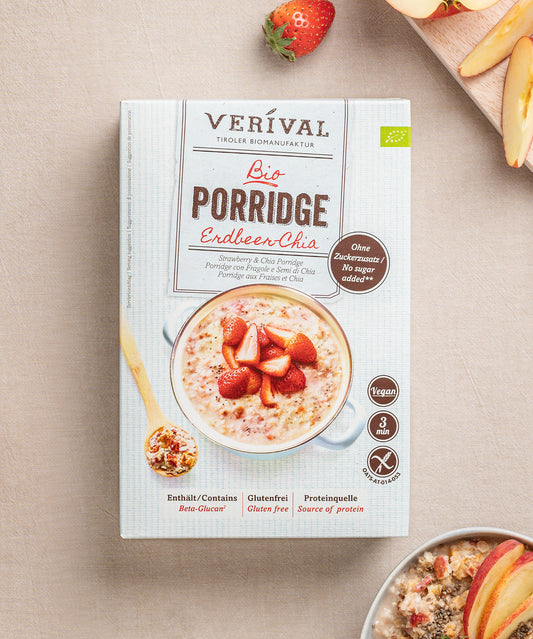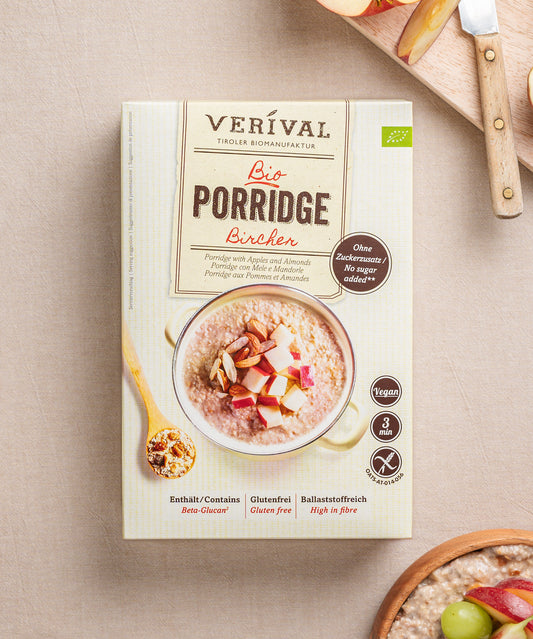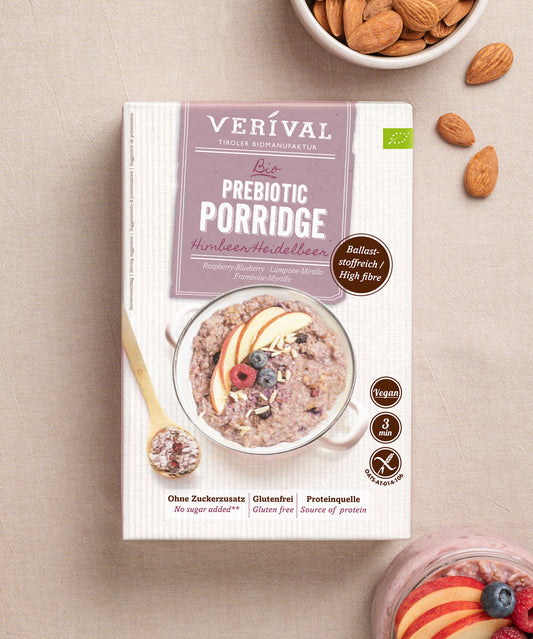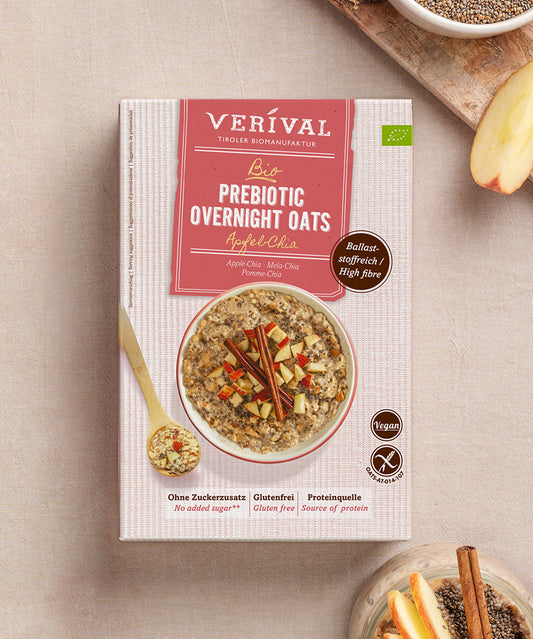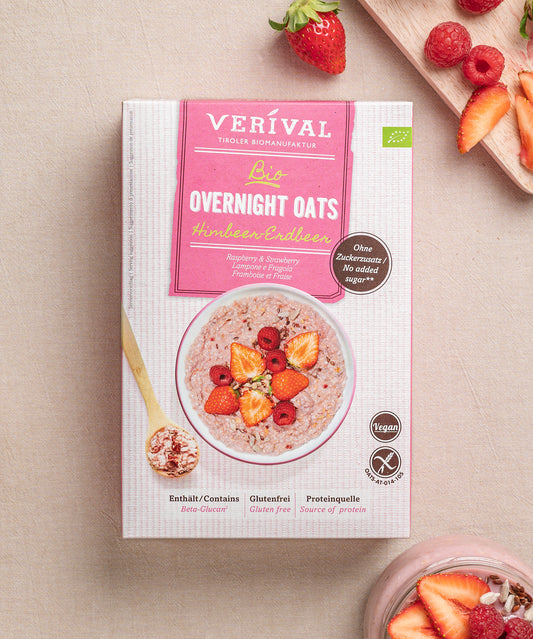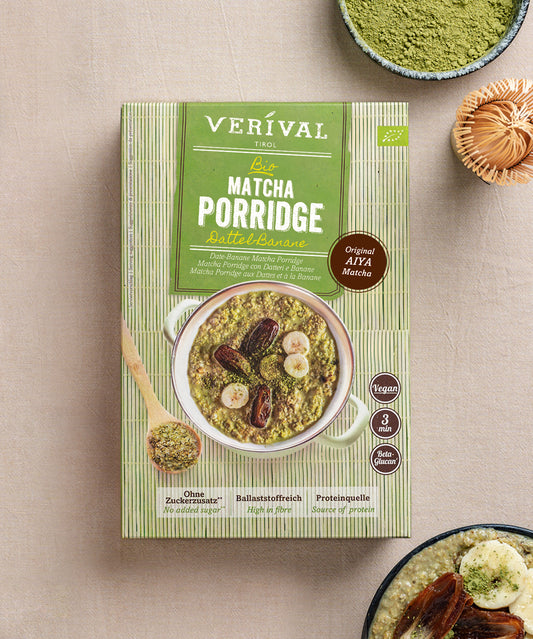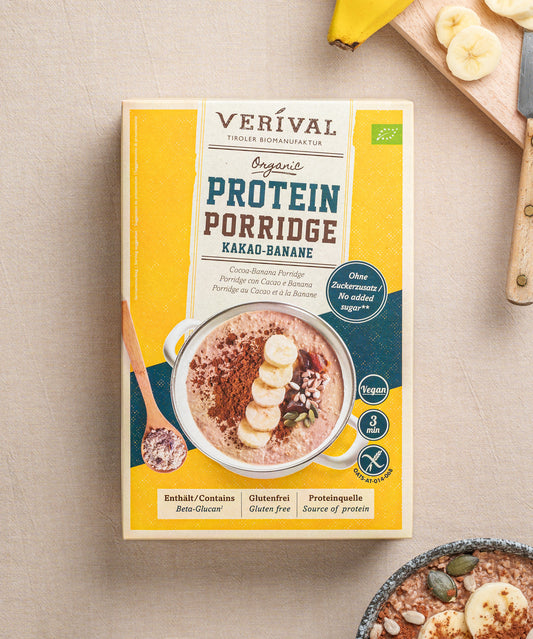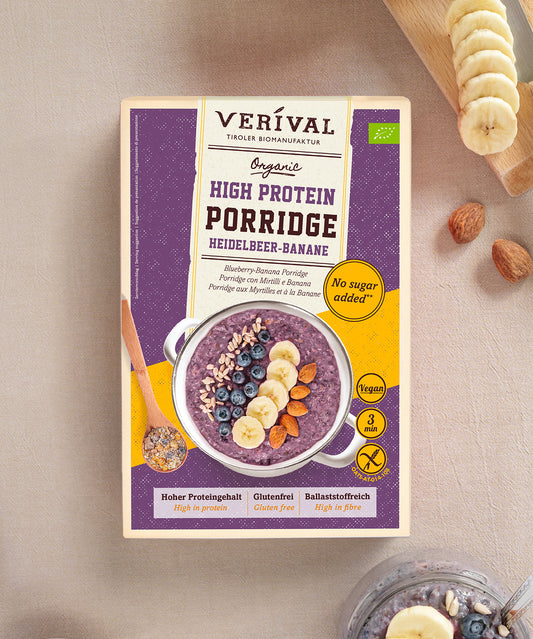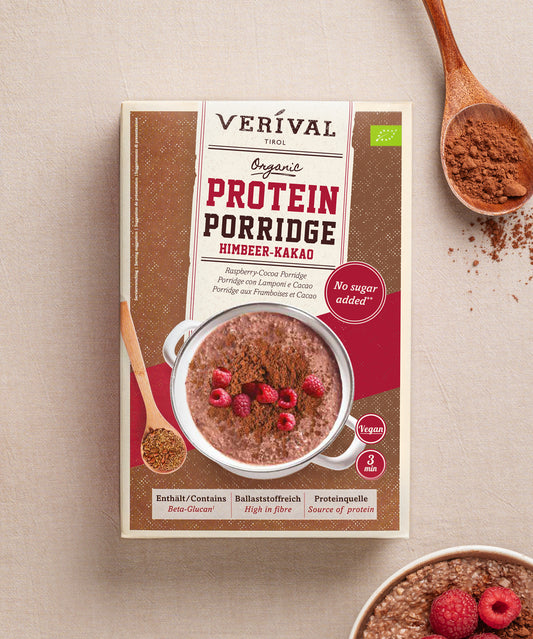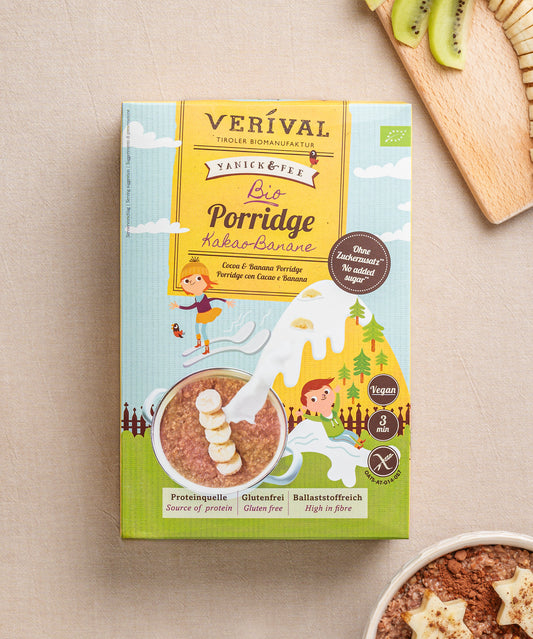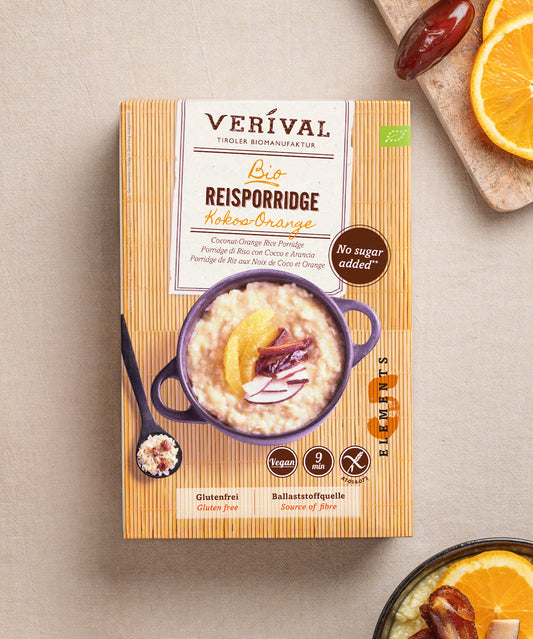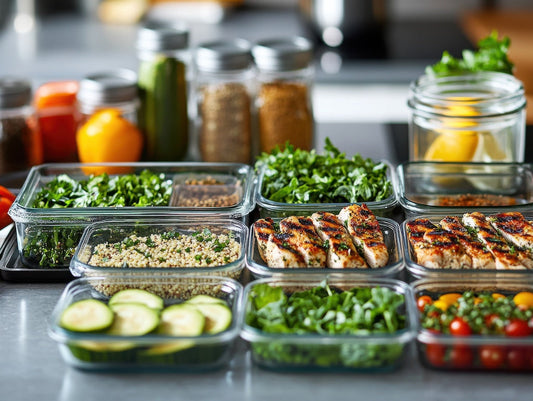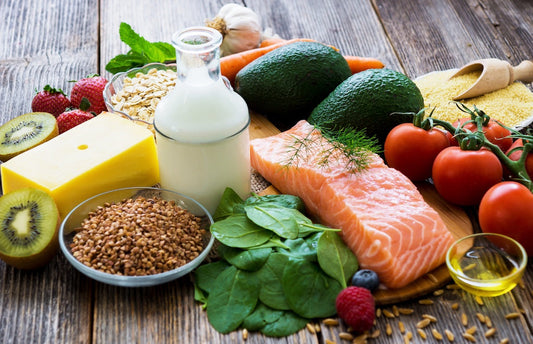If you regularly suffer from headaches, skin redness or an unpleasant feeling of fullness after breakfast, you may be suffering from histamine intolerance. Many classic breakfast ingredients such as cheese, cold cuts and overripe fruit are rich in histamine and therefore often trigger unpleasant symptoms. We show you how to enjoy a tolerable, delicious and uncomplicated breakfast despite histamine intolerance!
Healthy organic breakfast from Verival – try it now!
What is histamine intolerance – and what does it mean for breakfast?
Histamine is a messenger substance produced by the body that is involved in many processes, such as immune defence, stomach acid regulation and allergic reactions. Histamine is also found in numerous foods or is produced during storage and ripening.
It is normally broken down in the body by the enzyme diamine oxidase (DAO). However, if this breakdown does not work properly, the condition is known as histamine intolerance.
The result: histamine accumulates in the body and can trigger symptoms such as headaches, skin redness, gastrointestinal complaints, palpitations or dizziness. What makes histamine particularly tricky is that it is not rendered harmless by cooking or freezing. In addition, there are foods that contain little histamine themselves but promote its release in the body, known as histamine liberators.
Many of these histamine-rich foods regularly end up on our plates, especially at breakfast. But with the right knowledge and a few alternatives, it is easy to get the day off to a good start.
What is well tolerated if you have histamine intolerance?
Which foods are well tolerated by people with histamine intolerance can vary from person to person. Nevertheless, there are some breakfast ingredients that have proven to be suitable for many sufferers. Fresh pseudo-cereals such as millet or quinoa form a safe basis. Gluten-free oatmeal is also ideal for hot or cold breakfast options.
When it comes to fruit, mild varieties such as apples, pears and blueberries are often a good choice. However, they should not be overripe. Rice milk and millet drinks are also considered tolerable alternatives to classic milk, as long as they are free from additives such as emulsifiers and flavourings.
Homemade porridges or mueslis without dried fruit and nuts are usually better than industrially processed products.
Common mistakes when eating breakfast with histamine intolerance
Even if you are well informed, mistakes can sometimes creep into your daily routine with histamine intolerance, which can have a negative effect on your well-being. Those affected often resort to foods from the previous day, such as reheated porridge, prepared fruit or stale bread. Histamine is also produced during storage, which is why fresh preparation is so important.
Another classic mistake is overripe fruit. A banana with brown spots contains significantly more histamine than one that is still slightly green. Fermented or mature foods such as cheese, yoghurt, sourdough bread or kombucha are also difficult for many people to tolerate.
Dried fruits such as raisins or dates and nuts such as walnuts or cashews are also often poorly tolerated by people with histamine intolerance. In addition, there are industrially processed products with hidden additives such as yeast extract, flavourings or preservatives, which are found in many mueslis, bars or spreads.
A food diary can be helpful, especially in the beginning. If you write down what you eat and how you feel afterwards, you can identify individual triggers more quickly and find good alternatives.
Breakfast for histamine intolerance with recipe ideas
With a little preparation and the right ingredients, you can whip up a delicious and easily digestible breakfast every day. Here are four simple ideas for a low-histamine start to the day:
1. Gluten-free porridge with low-histamine fruit
Ingredients
- 250 ml milk or a plant-based alternative for vegans (e.g. rice milk, millet and spelt milk, etc.)
- 50 g gluten-free oats
- 1 pinch of salt
- 2 tsp agave syrup (optional)
- 1/2 tsp cinnamon (optional)
Preparation
- Bring the oatmeal with a pinch of salt and your sweetener of choice to the boil in the milk or plant-based drink (stirring constantly). Another option is to cook the oatmeal in hot water.
- Leave the porridge to stand for 3 minutes.
- Pour the porridge into a bowl and sprinkle with cinnamon.
- Enjoy!
A classic for sensitive stomachs, this porridge is filling, warm and mild in flavour. Add fresh fruits such as apples, pears, raspberries, blueberries or peaches as a topping. It is important that the fruits are not canned or frozen, but as fresh as possible.
2. Quinoa porridge with berries
Ingredients
- 70 g quinoa
- 150 ml plant milk
- 2 tbsp agave syrup
- 50 g fresh berries
Preparation
- Put the quinoa in a saucepan with twice the amount of liquid and simmer for about 10 minutes.
- After 10 minutes, add the plant-based milk and agave syrup to the saucepan and simmer for another 10 minutes.
- Once your quinoa porridge is ready and has a creamy consistency, turn off the heat, add the berries and stir them in.
- Taste the quinoa porridge and add a little more agave syrup if necessary.
Tip: If you don't have much time in the morning, prepare your breakfast the night before and store the quinoa porridge in a sealed container in the fridge. Add the fresh berries in the morning.
3. Crunchy granola without nuts
For those who like it crunchy: mix 100 g gluten-free oats with 2 tablespoons coconut oil, 1 tablespoon sunflower seeds and a little maple syrup. Bake the mixture at 160 °C for about 15 minutes until golden brown. Once cooled, store in an airtight container and serve with plant-based milk and fresh fruit.
4. Spelt bread with cream cheese and cucumber
Those who prefer a savoury breakfast will also be satisfied. A slice of fresh spelt bread spread with cream cheese and topped with cucumber slices makes a mild, refreshing meal for sensitive days. You can season with a few fresh herbs or herb salt if desired.
What else you should consider
Histamine intolerance doesn't just affect your diet. Stress, lack of sleep and hormonal fluctuations can also exacerbate symptoms. That's why it's worth taking a holistic look at your lifestyle.
Fresh foods, simple preparation and a good gut feeling should be the focus. Sometimes less is more, and the more natural your ingredients are, the better. If you are severely affected or unsure, it may be helpful to seek guidance from an experienced nutritionist. This will help you find out what is really good for you more quickly.
Conclusion: Low-histamine breakfast ideas for a good start to the day
Even with histamine intolerance, you don't have to miss out on a varied and enjoyable breakfast. With fresh, natural ingredients and a little preparation, you can start your day in an easy, digestible and beneficial way.
Discover Verival organic breakfasts with no artificial ingredients now!
Frequently asked
What can I eat for breakfast if I have histamine intolerance?
Freshly prepared dishes made from millet, quinoa or gluten-free oats, combined with mild fruits such as apples or pears, are a good choice. Rice milk, cream cheese and a boiled egg are also well tolerated, depending on individual sensitivity.
Are oats low in histamine?
Oatmeal does not contain histamine and is generally considered to be well tolerated. However, make sure it is freshly prepared and choose products that are as natural as possible without additives.
What to put on bread if you have histamine intolerance?
Mildly filled sandwiches with cream cheese, cucumber slices or homemade spreads made from well-tolerated ingredients are a good choice. It is important to use fresh bread and avoid yeast or sourdough if possible.
Can I eat fried eggs if I have histamine intolerance?
Many people with histamine intolerance tolerate freshly prepared fried eggs well. Eggs do not contain histamine, but should not be stored for too long or reheated.


